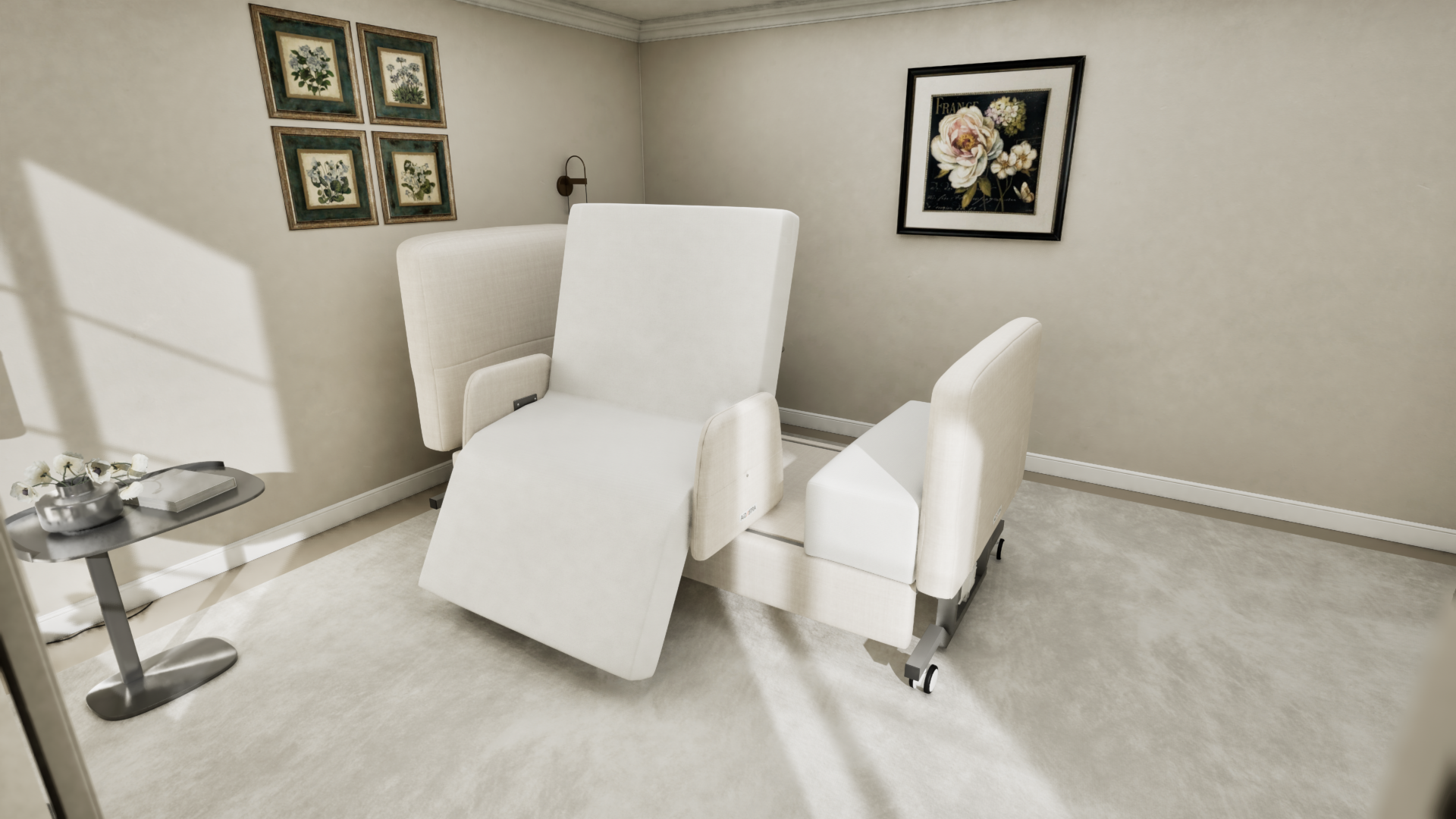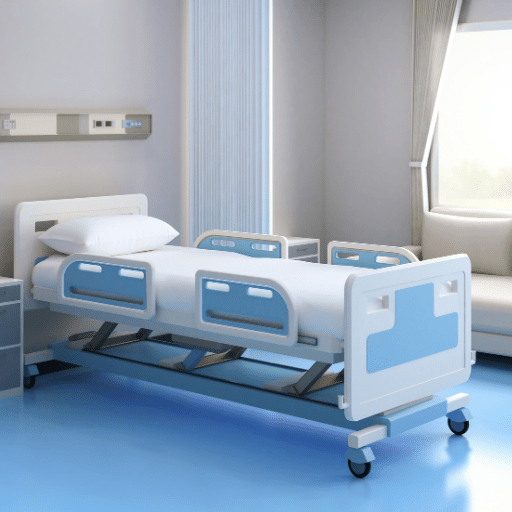Rumored Buzz on Hospital Beds For Home Use
Rumored Buzz on Hospital Beds For Home Use
Blog Article
Not known Facts About Hospital Beds For Home Use
Table of ContentsSome Known Questions About Hospital Beds For Home Use.See This Report on Hospital Beds For Home UseEverything about Hospital Beds For Home UseGetting My Hospital Beds For Home Use To WorkThe Best Strategy To Use For Hospital Beds For Home Use3 Simple Techniques For Hospital Beds For Home UseHospital Beds For Home Use Can Be Fun For Everyone
There are 3 main sorts of medical facility beds: manual, semi-electric, and fully-electric. Even more types of clinical beds exist and they are detailed below. These beds use hand cranks to change the bed's height and increase and lower the head and the foot. Hand cranks are usually located at the foot of the bed and require an individual that is physically efficient in operating.
Semi-electric beds have an electrical motor to raise and lower the head and foot parts of the bed (hospital beds for home use). Full-electric beds have an electrical motor that can elevate the head and foot sections of the bed as well as the whole elevation and positioning of the bed.
See This Report on Hospital Beds For Home Use
Some versions can also relocate right into even more placements, such as the Trendelenburg (tilt) position. There are a number of kinds of health center beds, each created to satisfy particular person demands. Here are some common types: This is the most common sort of medical facility bed, made for general medical use. It has a manual or electrically flexible headrest, foot rest, and height.
Lower to the ground than a typical bed. This kind of bed is designed for larger individuals, with a wider structure and greater weight capability than a conventional bed. This kind of bed is designed particularly for kids, with smaller dimensions than a typical bed. Unique attributes such as full length side rails and animation style.
This kind of bed is developed for seriously sick clients that call for open surveillance and specialized medical equipment such as ventilators and mixture pumps. This sort of bed is created for use during labor and distribution, with adjustable positions and functions to support the mom and infant during the birth procedure.
The Best Guide To Hospital Beds For Home Use
Numerous feature and the accessories do broadening traction to various parts of the vertebra and the extremities without moving the body. These are just a couple of examples of the sorts of health center beds available. The certain kind of bed used will certainly rely on the person's problem, clinical demands, and other factors.
Here is the important things you need to recognize. A one-function medical facility bed is a medical bed that permits a patient to relocate just the head or foot section up or down. A 2 function healthcare facility bed generally refers to a sort of medical bed that has 2 flexible functions to help patients in hospitals or treatment facilities.

The 25-Second Trick For Hospital Beds For Home Use
A 7-function ICU bed is a type of clinical bed that provides several flexible features to sustain seriously unwell people in a critical care unit (ICU) (hospital beds for home use). The seven features usually include: Backrest adjustment: The backrest can be adapted to different angles to assist the patient stay up or relax easily
Height modification: The bed can be elevated or reduced to make it easier for individuals to enter and out of bed, and for caretakers to offer treatment. Trendelenburg setting: The whole bed can be slanted to advertise blood flow and flow in the body. Reverse Trendelenburg setting: The visit the site bed can likewise be tilted in the opposite direction to advertise blood flow and blood circulation in the upper body.
1. What Dimension is a Hospital Bed? 2. Just how Much Does a Medical Facility Bed Price? 3. Why Do Health Center Beds Have Side Rails? 4. What Are The Main Healthcare Facility Bed Parts?. While even more inexpensive than electric versions, these beds require exertion for modifications. The primary advantages of manual beds are their cost and dependability, as they don't rely upon electrical power. The need for hands-on effort can be a constraint in scenarios where quick modifications are required or where caregivers deal with physical difficulties.
Top Guidelines Of Hospital Beds For Home Use
Semi-electric health center beds supply an equilibrium of handbook and electrical controls. These beds supply an excellent middle ground in between manual and completely electrical choices, providing ease of use advice without the complete price of electric designs.
Semi-electric beds are well-suited for patients that require modest changes to the head and foot areas yet can take care of without frequent elevation modifications. This makes them an economical option for those seeking convenience and convenience without the requirement for constant repositioning. Completely electrical health center beds feature electric controls for smooth adjustments to the elevation, head, and foot sections.
Specialty hospital beds, such as ICU beds, long-term care beds, and bariatric beds, are thoroughly developed to resolve certain clinical requirements. These beds offer customized take care of diverse individual groups, boosting both results and convenience. In the following sections, we will discover the major sorts of specialized healthcare facility beds, detailing their certain benefits and applications.
With years of experience in producing electric linear actuators - hospital beds for home use and close cooperation with the medical care market, TiMOTION is well-positioned to give reliable healthcare options. Our vertically integrated business manages every action of the production procedure, from design to actuator assembly, guaranteeing we deliver remarkable value and tailored services tailored to your specific demands
Hospital Beds For Home Use Fundamentals Explained

To discover more concerning integrating these innovations right into your items, contact us today. Further analysis:.
Information is sourced from the Medicare Price Record. Accessed January 2025. Short-term intense care hospitals have the highest possible average variety of beds at 187. They are the most typical type of healthcare facility in the U.S. and comprise even more than 50% of U.S. hospitals. Children's healthcare facilities have 178 beds generally and VA medical facilities typical 175 beds.

See This Report about Hospital Beds For Home Use
A health center bed is a bed made especially for medical purposes. It is not just a place for individuals to relax, but additionally a system for medical procedures. Unlike regular home beds, healthcare facility beds generally have flexible attributes, which can assist in clinical team to make different modifications according to the demands of individuals, such as altering the height, inclination, and support angle of the back and legs of the bed.
Report this page